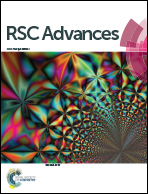Protein engineering of a new recombinant peptide to increase the surface contact angle of stainless steel
Abstract
Biofouling seriously affects the properties and service life of metal materials. A number of studies have shown that the initial bacterial attachment to the metal surface and the subsequent formation of biofilm are dependent on the surface characteristics of the substratum, including metal surface free energy, roughness and metallurgical features. In this study, a novel recombinant fusion protein, which consists of receptor binding domain protein (RBD), truncated protein fragment of MrpF and alkaline phosphatase (PhoA) domains, has been constructed in an attempt to increase the surface contact angle of stainless steel. It has been confirmed that RBD has a strong affinity to 304 stainless steel; the truncated protein fragment of MrpF has high hydrophobicity and anchoring features, which can improve the contact angle of the material surface, whilst PhoA is an effective detection tool to monitor the expression and secretion of fusion protein. Multiple assays including FTIR, XPS, SEM-EDS and contact angle measurement revealed the existence of nitrogen and sulfur elements, binding energy shifts of nitrogen, carbon and oxygen atoms, and new FTIR peaks in treated stainless steel samples with increased contact angles at about 50°, confirming that a new organic steel material has been produced responding to these surface property changes. Using novel recombinant peptides to react with steel could become a new technique to increase the surface contact angle of the stainless steel for diverse applications.


 Please wait while we load your content...
Please wait while we load your content...